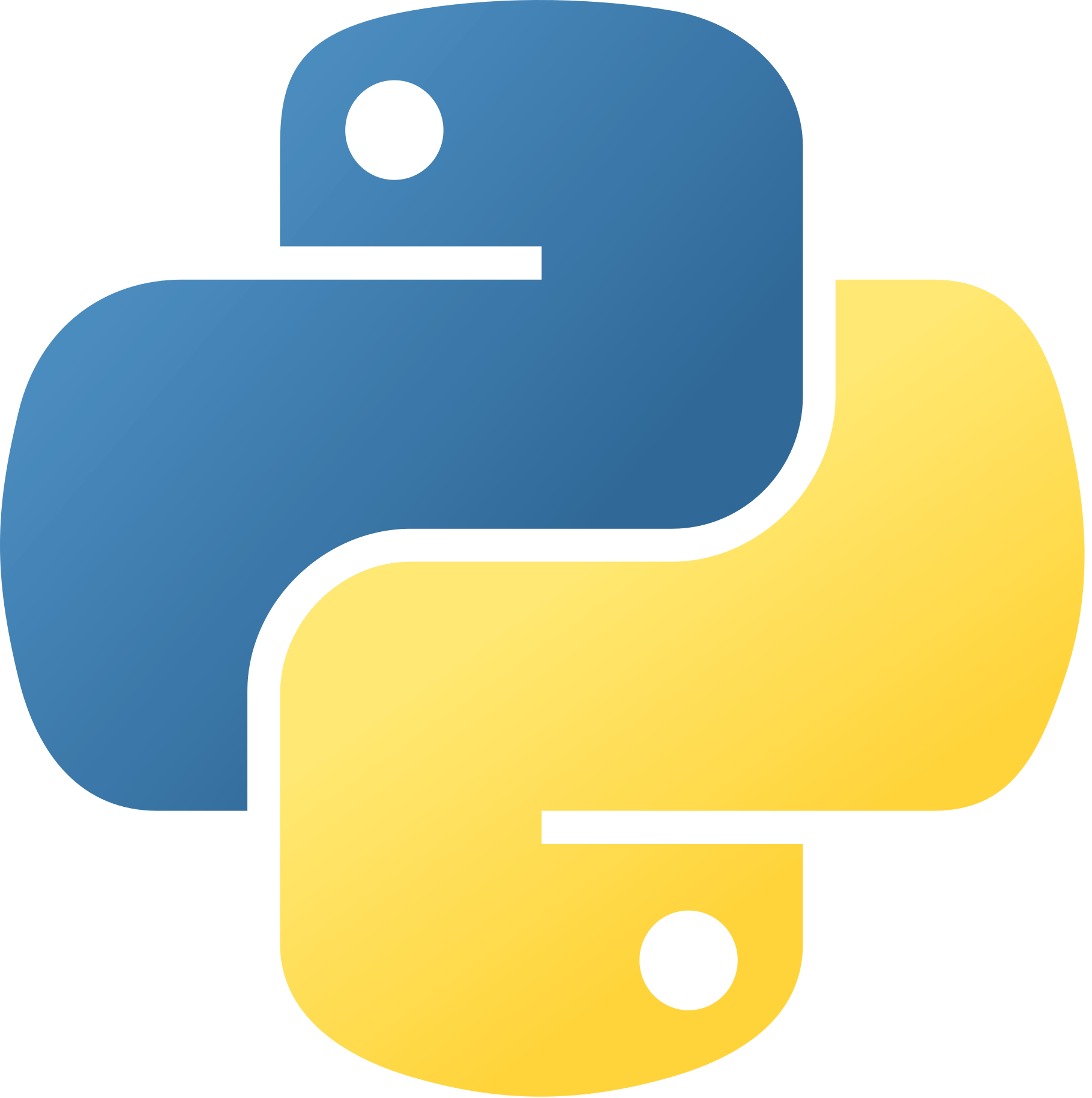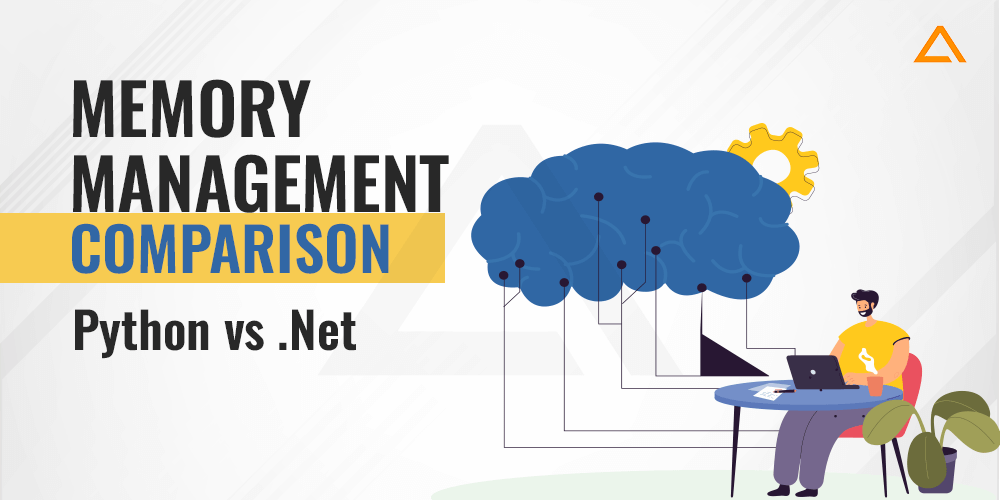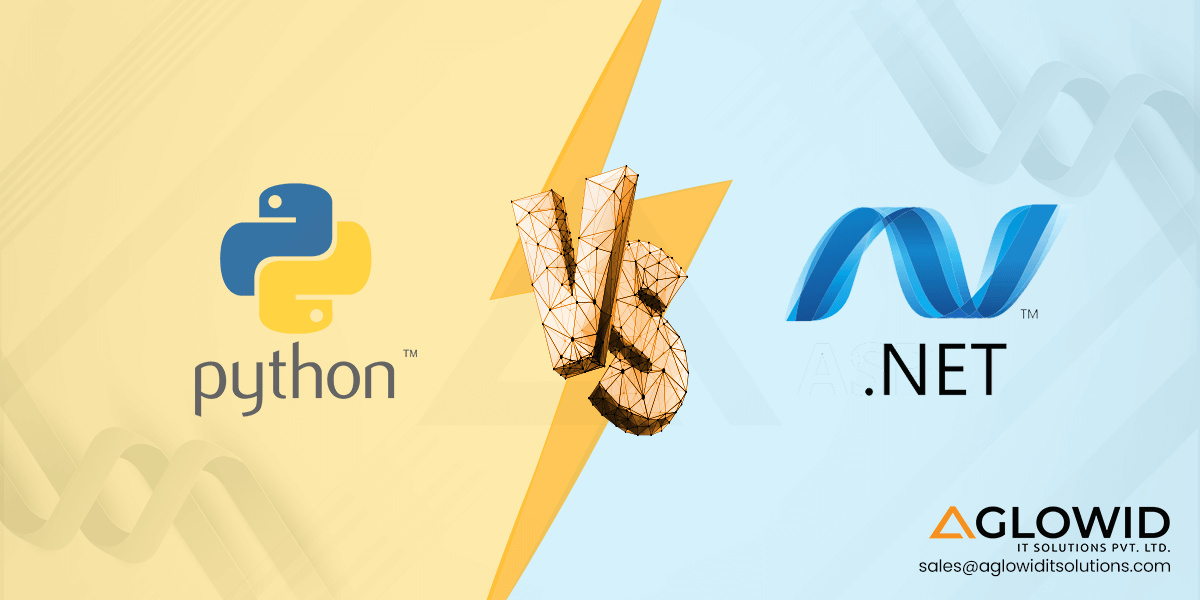Quick Summary:
Stuck in the endless loophole of Python vs .NET with no way out? Picking the right technology can impact the project’s success ratio significantly. Hence, it is advisable to be well-versed in all Python and .NET differences and similarities to pick the right programming tool for your project. Today, we will compare Python to .NET to understand what these platforms offer and how they bid against each other in this ultimate .NET vs Python comparison blog.
In this blog, we’re going to discuss📝
What are the main characteristics you look for when developing a web application? You want them to be robust, scalable, secure, easy to use, and reliable in terms of long-term support, to name a few traits. Python and .NET stand strong on all these footholds, with impressive capabilities, features, and extensibility to be molded as you like.
However, this does not mean they should be used interchangeably and randomly without understanding or assessing their capabilities and how they bid against each other. Today, you’ll understand the basic concepts of these two programming languages, see how they compare on certain benchmark aspects, and understand when choosing one over the other is advisable. Let’s get right into it:
.NET vs Python Market Popularity Comparison
Let’s start by comparing the popularity of .NET and Python. Popularity is a good measure of relevance in the market and the flexibility a platform offers for different use cases. There are many credible sources through which we can gain a proper insight into the popularity differences and stats between Python and .NET. Let’s get right to it:
Python vs .NET Google Trends Comparison
When we compare Python to .NET on Google Trends, it’s clear that Python surpasses .NET by a good margin. This is probably because Python has a vast library of extensions and dedicated frameworks such as Django and Flask that can be used for multiple use cases. .NET is a cross-platform capable of building various applications in different industries. Still, its popularity might be more concentrated on specific domains, such as enterprise-level applications and window-centric development projects.

Python vs .NET Stack Overflow Trends Comparison
If Google Trends shows the average user’s interest over time in .NET and Python, Stack Overflow Trends gives a better idea of their popularity amongst the developer community. As you can see, the percentage of stack overflow questions asked for Python has steadily grown with rapid acceleration in recent years. In contrast, the curiosity around .NET has constantly witnessed a dip and plateau from 2016.

Python vs .NET – Overview of Python and .NET
Python is one of the most versatile, powerful, and popular programming languages. Why is Python preferred among developers? It is designed to be one of the easiest programming languages to learn, with a simple syntax and a lower learning curve.
It is generally the most preferred backend solution for many web apps and applications for its versatility in custom software solutions, web apps, games, enterprise applications, and more. Moreover, Python, renowned for its extensive library of useful packages, particularly excels in data science and AI/ML integrations. This capability allows developers to harness the power of Python libraries for data science, creating cognitive and smart app solutions.
Microsoft’s .NET framework is an open-source software development framework used for building desktop and web applications. It is a popular cross-platform framework with a wide range of pre-built development tools that make building desktop, mobile, and web apps much easier. The .NET framework supports multiple programming languages such as C#, F#, and Visual Basic, providing developers with freedom and choice of the programming language they want.
Python and .NET – Similarities, Synergies and Differences
Before exploring the key differences between Python and .NET, we should get an overview of their similarities, synergies, and differences. Remember, in the world of development, no two technologies are meant to be stark competitors of each other; all frameworks and libraries always have certain similarities, scope to be used together, and certain USPs that set them apart. Let’s explore all three aspects of .NET and Python:
Similarities b/w .NET and Python
- .NET & Python both follow Object Oriented Programming Principles
- Both .NET and Python support cross-platform development. Python is known for its platform independence, and .NET introduced cross-platform compatibility with .NET Core
- Python and .NET have large, active communities with numerous resources, libraries, and frameworks
- If you want versatility, you can opt for Python or .NET for most use cases. They both have impressive range and capabilities in web development, desktop applications, data science & more
- They both have rich ecosystems with many libraries and frameworks that facilitate development
Synergies of using Python with .NET
- You can integrate Python with .NET to leverage the strength of both platforms to power a single application. You can use python net, IronPython.net, or any other such library to use these libraries together
- Both .NET and Python support multiple programming paradigms, including object-oriented, procedural, and functional programming
- Both Python and .NET have provisions and tools for supporting interoperability. Python can call .NET components, and .NET languages can interact with Python code
Differences b/w .NET and Python.
- Python has a clean, concise syntax with a focus on readability and simplicity. In contrast, .NET languages like C# and VB.NET have syntaxes that resemble C++ and Java
- Python is dynamically typed, where the variable types get determined during runtime, whereas .NET languages are statically typed, where types are checked during compilation time
- While .NET and Python provide cross-platform capabilities, Python is platform-independent by nature, supporting more platforms and use cases than .NET
- Python is mainly used for data science, machine learning, web development, and scripting. In contrast, .NET is primarily employed in enterprise projects, desktop app development, and server-side solutions
Python vs .NET Differences Tabularized
We saw that Python and .NET are worthy options in their rights and use cases. However, all programming languages and platforms can be compared on key development, business, and other aspects to better understand how they bid against each other and which platform is ideal for your project. Let’s start with a quick comparison table highlighting the fundamentals of Python and .NET:
Python vs DOT NET Quick Comparison Table
| Factor | Python | .NET |
| Technology | Interpreted, High-Level | Framework |
| Developed By | Python Software Foundation | Microsoft |
| Release Year | 1991 | 2002 |
| Written In | C, Python | Majorly in C# |
| Primary Use Case | ✬ Web Development ✬ Data Science ✬ Machine Learning ✬ Scripting |
✬ Enterprise Application ✬ Desktop Application ✬ Server-Side Development |
| Web App Frameworks | ✬ Django ✬ Flask ✬ Pyramid |
✬ ASP.NET ✬ ASP.NET Core |
| Performance | Interpreted, hence, could be slower than compiled languages | Compiled code, better performance |
| Learning Curve | Beginner-Friendly | Steeper with complex syntax system |
| Database Support | Extensive support | ADO.NET for database access |
| Security | Can be fine-tuned with Python security best practices | Security-based features such as Code Access Security |
| Community Support | Large & Active Community | Large community-driven support |
| Syntax | Concise & Readable | Similar to C++ and Java |
| Libraries | Extensive Python libraries with ecosystems such as PyPI | .NET framework libraries with NuGet packages |

Hey!
Are you Looking to Hire Python Developer?
Hire a dedicated team from Aglowid for high-quality python developers who are equipped with the latest Python skill-sets
Python vs .NET : Comparison between Python and .NET
Now that we understand the fundamentals of Python and .NET, let’s compare them to the most important metrics like performance, speed, and platform flexibility to see how they bid against each other or approach the common metric in their style. Here’s all you need to know about Python vs .NET 2024 comparison:
Python vs .NET Speed Comparison
Python is like a bike with great pickup capabilities since it follows a simple and concise syntax, allowing developers to quickly get comfortable coding in Python. Also, since Python has a more concise codebase, developers don’t need to spend much time writing lines and lines of code, resulting in faster development. This allows Python developers to develop more iterations and prototype rigorously to achieve the ideal app’s functioning that matches the client’s vision.

.NET is more of a cruiser that takes some fine-tuning in the beginning. Since .NET languages like C# and VB.NET prefer static typing, developers must define the code structure and be more explicit about the types. These minor adjustments can make .NET seem slower in comparison to the rapid development approach of Python; however, by working more on the initial configuration of the .NET project, the overall development process picks up speed and stability, leading to fewer coding issues.
.NET vs Python Performance Comparison – Interpreted vs Compiled
We all are curious about this aspect. Or we think the answer is quite simple. Python is an ‘interpreted’ programming language compared to the compiled nature of .NET languages such as C#.

Why does this matter?
The difference between interpreted language like Python and compiled language like .NET framework lies in the trade-offs and considerations you need to check with your project to know which of the two is better for you.
What is interpreted vs compiled?
Python follows an interpreted nature, which means the Python codebase gets executed line by line by the Python Interpreter. This can cause significant delay and slower execution speed compared to compiled programming languages like .NET that get compiled into machine code. Moreover, .NET has JIT – Just-In-Time Compiler that converts the .NET languages from an intermediate language to machine code at runtime. This can result in better performance than Python’s interpreting line-by-line codebase approach.
Execution Overhead
Python’s interpreters also add a layer of overhead when executing Python code, which can impact performance significantly compared to .NET, which directly runs machine code, reducing the execution overhead.
Resource Utilization
Compiled languages provide better memory management and optimize resource utilization since the compiled code is optimized for the target machine’s architecture. In contrast, Python has something known as a GIL – Global Interpreter Lock, which can limit the parallel execution of threads and impact the use of multi-core processors.
Python vs .NET Typing System
When we compare Python to .NET, we should look at one of the major distinctions between the two languages. Python is dynamically typed, which provides developers more flexibility in their coding. However, the same flexibility can lead to increased chances of bugs manifesting only at runtime. .NET, on the other hand, is statically typed. The compiler will enforce the type-checking process at compile-time, benefitting developers by receiving early alerts or detecting potential errors. This improves the code readability significantly. Although, it does come with a trade-off for the flexibility provided by Python’s dynamic typing.
Hey!✋
Are you looking to hire .NET developers?
Unleash the boundless potential of your .NET projects with our elite team of expert .NET developers @ Aglowid.
.NET vs Python Memory Management Comparison
Efficient memory management impacts your project’s performance, resource utilization, and scalability. When comparing .NET to Python regarding memory management, it is important to compare them based on the characteristics of each programming language.

.NET Memory Management
.NET languages operate on a managed memory model, featuring automatic memory management through a garbage collector. The garbage collector is responsible for identifying and reclaiming memory that is no longer in use. This approach simplifies coding, enhances developers’ productivity, and reduces the chances of memory leaks. .NET also comes with the Common Language Runtime, which helps manage memory by allocating the objects on the managed heap and periodically performing garbage collection to free up unused memory. This automated process can cause some overheads, but it results in more stable and secure apps in the bigger picture.
Python Memory Management
Python follows a similar path to .NET by employing an automatic memory management process, primarily using a garbage collector. The Python Memory Manager handles all allocation and deallocation of memory for objects in the Python runtime environment. The Python garbage collector uses a combination of reference counting and a cycle detector to identify and collect objects no longer referenced by the program. BUT, the main issue with Python memory management comes from its GIL – Global Interpreter Lock that allows only one thread to execute Python bytecode at a time. This can impact the performance of multi-threaded applications on Python.
Python vs .NET Platform Flexibility
When you look at python vs java, Python is the most versatile programming language after Java. With minimum modifications, it can operate on platforms like Windows, MacOS, or Linux. This platform-independent nature of Python eliminates the need to spend many development hours and efforts to make Python run on different environments.

.NET has not always been cross-platform compatible. It was often associated with and confined to the Windows ecosystem. This changed with the introduction of .NET Core, significantly enhancing .NET cross-platform capabilities. Developers can now build and deploy .NET applications on Windows, MacOS, and Linux.
.NET vs. Python Use Cases
.NET and Python are versatile technologies with broad applications across various domains and platforms. Choosing between .NET and Python often comes down to developer availability, their preferred programming language, or any specific project requirement and goals that can benefit from the strengths of one programming language over the other. To give you some guidance into this maze, here are some ideal use cases for .NET vs Python:
| .NET Use Cases | Python Use Cases |
| Enterprise level applications | Web Development with frameworks like Django and Flask |
| Windows desktop applications using technologies like Windows Presentation Foundation or Windows Forms | Data Science and ML using libraries like NumPy, Pandas, TensorFlow, and PyTorch |
| Web Development using ASP.NET | Scripting and automation |
| Cross-platform mobile app development using Xamarin | Scientific computing using libraries like Matplotlib, Jupyter, and SciPy |
| Cloud-based solution by integrating it with Microsoft Azure | Backend development, server-side development, and APIs |
| Game development through Unity 3D | – |
Wrapping Up!
These are the differences between Python and .NET that you should know about. Both .NET and Python are worthy competitors, each deserving and capable of being the preferred tech stack for your next project. You can also explore potential synergies if you already have a .NET or Python application with modules that could use the other framework. Hire web developers who know how to use these technologies together or can guide you in strategizing your project’s roadmap and tech selection.




